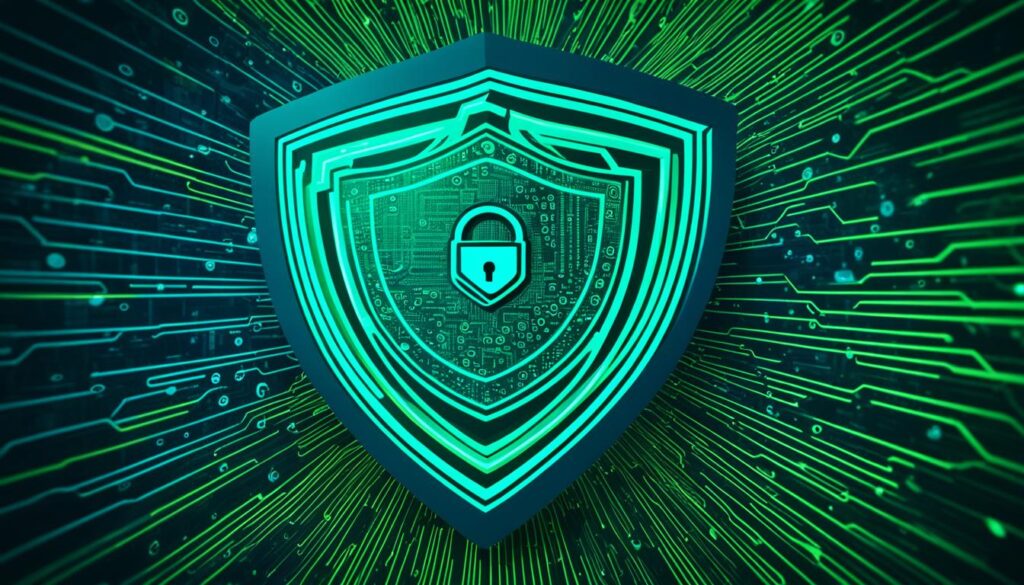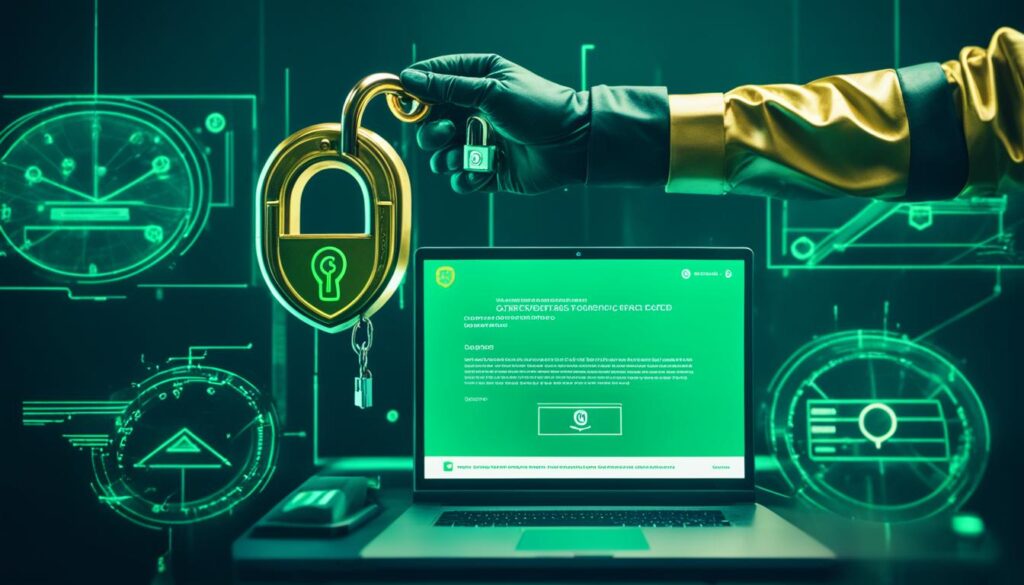Did you know that in recent evaluations, over half of all web applications were found to contain security vulnerabilities related to weak code practices? In our increasingly digital world, code security isn’t just a technical concern; it’s a cornerstone of trust in technology. Organizations everywhere are investing in safeguarding code with digital signatures, a testament to the critical nature of software certificate management. Code signing certificates play a pivotal role in protecting digital assets, authenticating the origin of software, and ensuring that it hasn’t been tampered with since its release—elements essential for maintaining the integrity and trustworthiness of a business’s digital offerings.
It has become an imperative for those developing and distributing software to rigorously secure their code signing keys. In a landscape replete with cybersecurity threats, a compromised key can lead to a cascade of trust issues for users and severe reputation damage for companies. Let’s explore the reasons why robust code signing certificates are not just a good practice, but a necessity in the quest for secure and reliable software.
Key Takeaways
- The necessity of code security in the face of growing cyber vulnerabilities.
- Understanding the impact of digital signatures in building user trust.
- Software certificate management as a safeguard for code integrity.
- The vital role of code signing certificates in modern software distribution.
- Strategies for effectively safeguarding code with digital signatures.
- Best practices for securing code signing keys against unauthorized use.
Understanding Code Signing and Its Importance for Security
In the vast landscape of cybersecurity, protecting your code with signing certificates is not just a measure of due diligence; it’s the bedrock upon which the integrity of modern digital infrastructure is built. Code signing offers a layer of authenticity, assuring end users that the software they’re entrusting their digital lives to is secure and unaltered from its original state—an expectation in today’s tech-centric world.
Code integrity measures, which include signing certificates, are vital for maintaining not only security but also the trust and reputation that users place in companies and their products. Whether it’s for mobile applications, desktop software, or critical firmware updates, code signing helps in assuring users that the content they download is genuine, thus preventing malware and other malicious actors from compromising the code.

| Code Signing Benefit | Impact on Security | Impact on Trust |
|---|---|---|
| Authentication of Source | Verifies software origin, preventing identity spoofing | Strengthens user confidence in the software source |
| Integrity Verification | Ensures code has not been tampered with post-signing | Assures users the product remains untainted |
| Non-Repudiation | Bindings the signer to the code, ensuring accountability | Users are assured the signer stands firm behind the software |
Code signing is more than a technical requirement; it’s a pledge of quality and safety to consumers. As developers and organizations continue to innovate, the need for robust code integrity measures grows. Ingraining code signing practices into the development lifecycle is not just a strategic move but a necessary evolution to counteract the escalating sophistication of cyber threats.
With digital freedom comes the onerous responsibility of safeguarding the sanctity of code—an endeavor that can decisively reinforce the delicate bond of trust between user and software provider.
Protecting Your Code with Signing Certificates
The cornerstone of secure software distribution lies in robust code authentication solutions. A digital signature affirms code security, communicating trust to end-users. Fundamentally, it is the digital certificates for code signing and the secure storage of keys that underpin this trust.

Why Code Signing Elevates Trust in Software
Digital certificates for code signing convey not just a technical verification of code integrity but also an assurance to users that the software they engage with is recognized as safe and reliable. The concept of non-repudiation, inherent in digital signatures, ensures that once the software producer has signed the code, they cannot deny their authorship. This certification process is critical for establishing and retaining user trust.
Countering Malicious Code with Authenticity Verification
To effectively counter malicious code, organizations must maintain stringent secure code deployment practices. Authenticity verification forms a shield against code impersonation or unauthorized modifications. To achieve this layer of defense, code signing keys must be preserved with unparalleled security, which is often where hardware security modules (HSM) become valuable assets.
Limiting access to these keys and deploying them in a highly secure environment significantly reduces the possibility of a compromise that could be calamitous to user trust and company reputation.
| Authentication Feature | Security Benefit | Impact on Trust |
|---|---|---|
| Private Key Protection | Reduces risk of key compromise | Bolsters confidence in software authenticity |
| Time-Stamping | Preserves validity even after certificate expiration | Extends usability while retaining trust |
| Regular Certificate Renewal | Ensures adherence to current security standards | Maintains ongoing user trust with up-to-date practices |
Adopting these solid authentication features indisputably leads to a more secure code signing process, which fundamentally strengthens user trust in the software they depend on daily.
Demystifying Digital Certificates for Code Signing
In the digital landscape, where the strength of a software’s security often underpins its success, understanding the intricate components of code signing certificates isn’t just a technical necessity—it’s foundational to maintaining robust reliable code signing practices. These digital certificates are the pillars of trust and verification in the world of software distribution and software certificate management.
Components and Functionality of Code Signing Certificates
A code signing certificate carries several essential elements which together perform the task of validating software authenticity. The primary components include a public key that corresponds to a private key held only by the original publisher. When software is signed, the code is hashed and then encrypted with this private key. Upon reaching the end-user, the public key within the certificate is employed to decrypt the hash and verify the software’s integrity, ensuring that it remains pristine and unaltered since its signing.
Distinguishing Between Different Types of Code Signing Certificates
The ecosystem of digital certificates for code signing comprises several variants, each designed to meet specific needs in software development and distribution environments. These entail standard and extended validation certificates, which differ in the level of vetting involved before issuance, and self-signed versus CA-issued certificates, where the latter is authenticated by a recognized Certificate Authority, significantly elevating the trust level among users.

Implementing rigorous cryptographic hardware compliant with standards like FIPS 140-2 Level 2 fortifies the security of these certificates by preventing unauthorized actions that could compromise private keys.
| Type of Certificate | Level of Trust | Vetting Required | Use-Case |
|---|---|---|---|
| Standard Code Signing | Basic | Domain Validation | Individual Developers, Small Projects |
| Extended Validation (EV) | High | Thorough Organization Validation | Enterprises, Software Firms |
| Self-Signed | Variable (limited) | None (issued by the Developer) | Testing, Internal Use |
| CA-Issued | High | Domain and Identity Validation | Widely Distributed Software |
The distinct measures cater to different production stages, from test-signing for trial runs to the more-secured release-signing for the actual distribution. This separation ensures that every stage of software delivery is nestled securely within the appropriate validation process, an exemplar model of superior software certificate management.
Proven Strategies for Secure Code Deployment
In an era where cyber threats are ever-evolving, implementing secure code deployment practices is paramount for maintaining the trust and integrity of software applications. Adhering to these strategies ensures that developers can confidently release and update software without compromising on security.

Employing Time-Stamps to Ensure Long-Term Code Validity
One critical aspect of secure code deployment is the use of time-stamps. Time-stamping secures a digital footprint proving when the code was signed, thus maintaining its validity even if the signing certificate subsequently expires or is revoked. This timestamp assures users of the code’s integrity far into the future, effectively extending the lifecycle of the software’s trustworthiness.
Understanding the Distinction Between Test-Signing and Release-Signing
Differentiating between test-signing and release-signing environments forms another foundational code integrity measure. Test-signing allows for internal validation and verification with less stringent security, while release-signing involves more robust protections. Recognizing this distinction ensures that production software remains secure throughout its deployment cycle.
The table below delineates the differences between test-signing and release-signing, shedding light on the specific code integrity measures pertinent to each:
| Aspect | Test-Signing | Release-Signing |
|---|---|---|
| Purpose | Internal verification and debugging | Securing production-ready code for public release |
| Key Security | Standard protections for internal use | Enhanced protection measures, often using HSMs |
| Access Control | Limited to development team | Strictly controlled with limited personnel access |
| Time-Stamping | Not always necessary | Mandatory for long-term reliability and compliance |
| Certificate Authority | Self-signed certificates or internal CA | Trusted Certificate Authority for public validation |
By implementing these secure code deployment strategies, teams not only reinforce the security of their applications but also underpin the continuous trust of users in the long run—a critical component for sustained success in today’s software-driven world.
Fortifying Your Code Signing Infrastructure against Threats
The ever-evolving landscape of code security necessitates stringent code integrity measures to combat the rise of software supply chain attacks. These attacks, often sophisticated and covert, exploit even the most minor vulnerabilities within the code signing process. As such, organizations must take definitive steps to reinforce their defenses, particularly by implementing role separation and ensuring a secure management of digital signatures.
To safeguard code with digital signatures, it’s crucial to create a rigorously controlled environment where code can be examined and signed. This involves setting up processes that distinctly separate duties within an organization to reduce the chances of unauthorized code manipulation or signature application. Below, we delve into key strategies designed to bolster the security of your coding infrastructure.
- Establish clear protocols for requesting and approving code signatures, with the authority to sign code being confined to a dedicated team or automated system.
- Enforce multifactor authentication and strict access controls for team members with the ability to request or apply digital signatures, preventing unauthorized access.
- Implement hardware security modules (HSMs) to store private keys securely, allowing only approved and authenticated users to access these sensitive elements.
- Adopt automated systems that facilitate oversight and tracking of the signing process, adding another layer of accountability to the secure coding practice.
By embracing these measures and prioritizing the security of your digital signatures, organizations can shield themselves more effectively from potential breaches and maintain the trust of their users through rigorous code security and integrity measures.
Key Management: Restricting Access and Handling of Sensitive Keys
Within the sphere of software certificate management, key management stands as a critical pillar, directly influencing the robustness of code authentication solutions. The prioritization of securing cryptographic keys forms the basis of reliable code signing practices, ensuring that the digital trust placed by users in software integrity is well-founded. Effective key management involves two fundamental axes: developing ironclad access controls and leveraging state-of-the-art hardware to diminish the risk of key compromise.
Implement Strong Access Controls and Reduce Key Exposure
To fortify code signing processes against unauthorized interference, rigorous access controls are indispensable. By strictly regulating who can interact with sensitive keys, malicious entities are less likely to infiltrate and manipulate critical infrastructure. Ensuring that access to cryptographic keys is confined to authenticated and authorized personnel only is a cornerstone of stringent security measures.
Leveraging HSMs to Secure Private Keys
The employment of Hardware Security Modules (HSMs) represents an advanced strategy in safeguarding private keys. By storing these keys within dedicated hardware, HSMs provide a protective barrier that is resistant to intrusion and exportation attempts, securing keys even in the face of persistent threats. Below is a depiction of the attributes that distinguish HSMs in the security landscape, illuminating their significance in resilient code signing frameworks.
| Feature | Benefit | Relevance to Code Signing |
|---|---|---|
| Physical Security | Resistant to tampering and unauthorized access | Guards against key extraction and cloning |
| Password Protection | Limits access based on robust authentication mechanisms | Strengthens control over who can use or export keys |
| Secure Key Generation | Keys are created in a safe environment, reducing exposure risks | Ensures the integrity of keys from the moment of their inception |
| Audit Trails | Tracks usage, enabling transparency and accountability | Facilitates compliance and forensic investigation if needed |
| Cryptographic Processing | Executes cryptographic operations without exposing keys externally | Maintains key secrecy during the code signing process |

In conclusion, the adept handling and restriction of access to sensitive keys, supplemented by the utilization of HSMs, form the core of software certificate management. By adhering to these principles, organizations can establish code authentication solutions that stakeholders can depend on and maintain reliable code signing practices that significantly mitigate the risk of code compromise.
Integrating Secure Code Signing into DevOps Pipelines
As software development continues to evolve with the rise of DevOps methodologies, the necessity for secure code deployment becomes increasingly critical. Seamless integration of code security mechanisms into DevOps pipelines not only fortifies the software against potential threats but also ensures efficient and trusted deployments. In the realm of DevOps, speed and security must coexist, requiring innovative solutions that can accommodate rapid release schedules without compromising the integrity of the code.
Minimizing Disruptions in SDLC While Maintaining Security Controls
To maintain the delicate balance between speed and security, the integration of code signing processes must be both agile and robust. Streamlining secure code deployment is achievable by adopting modern code signing tools that allow developers to sign code seamlessly within their development environments. This approach minimizes disruptions in the Software Development Life Cycle (SDLC) by removing bottlenecks that typically arise from rigid security protocols.
Fostering Collaboration Between Security and Development Teams
The collaboration between security professionals and developers is the cornerstone of embedding security into the development pipeline. When security teams work closely with developers to align code security practices with DevOps processes, the result is a more secure, efficient, and responsive development cycle. This partnership is instrumental in ensuring that security is not a hurdle, but rather an integral and seamless aspect of the overall development workflow.
Maintaining Code Integrity with Regular Audits and Monitoring
In the ever-evolving landscape of software development, code integrity measures are not just beneficial—they are imperative. An essential component of these measures is the steadfast monitoring of code signing certificates—a vital aspect of software certificate management. Ensuring the ongoing validity and security of these certificates is akin to setting a watchful guardian over the sanctity of your code.
Continuous Monitoring of Key and Certificate Status
The cyber world never sleeps, and neither should your vigilance over code security. Continuous monitoring allows you to detect any discrepancies or anomalies in real time, reducing the windows of opportunity for would-be attackers. This proactive approach includes tracking the expiration dates of certificates, monitoring the robustness of algorithms, and staying abreast of the ever-changing landscape of security standards.
The Importance of Logging All Code Signing Activities
Audit trails serve as the memory of your security infrastructure. By logging every code signing activity, you not only create a reliable method for post-analysis in the event of a breach but also uphold stringent standards of regulatory compliance. These logs become indelible records of who accessed what, when, and how—all of which is critical information for unraveling the thread of a potential security issue.
Regular audits are the pillars that support the integrity of any code signing framework. They allow organizations to preemptively catch and seal any cracks in their digital armor. It’s not just about keeping to standards; it’s about setting new benchmarks for code security, and thereby, protecting the digital ecosystem at large.
Conclusion
In an age where digital threats are constantly evolving, the vigilance in protecting your code with signing certificates serves as a testament to the value you place on software security. Investment in code signing is not merely a preventive measure; it’s a declaration of the commitment to maintaining the sanctity of the digital ecosystem. As the reliance on technology escalates, so does the necessity for robust secure code deployment practices. Thus, it is not only about safeguarding your assets; it’s about upholding a trust that users place in digital solutions provided by your organization.
Adhering to industry best practices for code security, including the utilization of reliable HSMs for key protection and implementing stringent access policies, forms the foundation of a resilient defense system. But beyond these measures, it is the proactive approach towards continuous monitoring and readiness to adapt to new security challenges that will distinguish a secure infrastructure from a vulnerable one. Seamless collaboration between developers and security teams will catalyze this endeavor, making security a shared responsibility rather than a siloed concern.
In summary, it is the persistent efforts in securing the integrity of the software supply chain that will define the future landscape of digital trust. By judiciously marshaling resources towards maintaining and continually fortifying the code signing infrastructure, organizations can stay ahead in the perpetual race against cyber threats. This commitment not only protects, but also strengthens the relationship with end users by delivering the certainty they depend on for their daily operations and online interactions.
FAQ
What is code signing and why is it critical for software security?
Code signing is a process that uses digital signatures to authenticate the source of software and confirm that it has not been altered since it was signed. This is critical for software security because it helps to protect users from downloading and installing malicious or compromised software, thereby maintaining the integrity and trustworthiness of the digital assets.
How does a code signing certificate elevate trust in software?
A code signing certificate provides a digital assurance, backed by cryptographic keys, that a piece of software is authentic and has not been tampered with. By confirming that the software comes from a legitimate source and is intact, it elevates trust among users and ensures a secure software supply chain.
What measures can be taken to protect code signing certificates from compromise?
To protect code signing certificates, organizations should employ hardware security modules (HSMs) to store private keys securely, enforce strict access controls, and minimize key exposure. Regular audits, continuous monitoring, and the establishment of separate test-signing and release-signing environments are also critical measures for safeguarding certificates from compromise.
What role do time-stamped signatures play in secure code deployment?
Time-stamped signatures play a crucial role in ensuring that code remains verifiable even after the code signing certificate used to sign it expires or is revoked. This extends the trustworthiness of the software and provides a long-term validation mechanism for verifying the integrity of the signed code.
How can organizations ensure the integrity of their code signing environment against advanced threats?
Organizations can fortify their code signing environment by establishing role separation policies, requiring multiple layers of approval for code signing operations, and employing HSMs to prevent key extraction. By creating barriers against unauthorized access and implementing secure procedures, companies can significantly reduce the risk of software supply chain attacks.
How do HSMs contribute to the security of private keys used in code signing?
Hardware Security Modules (HSMs) contribute to the security of private keys by providing a secure and tamper-resistant environment where keys can be generated, stored, and used for signing operations. Since HSMs do not allow the exportation of private keys to less secure environments, they prevent potential attackers from accessing and misusing them.
What are the best practices for integrating secure code signing into a DevOps pipeline?
Integrating secure code signing into a DevOps pipeline involves automating signing processes while maintaining strict security controls, using tools that support signing from remote locations without local storage of keys, and fostering strong collaboration between security and development teams to ensure smooth and secure software delivery.
Why is it important to continuously monitor the status of code signing certificates?
Continuous monitoring of code signing certificates ensures that they are always up-to-date and secure, with strong algorithms in use. This helps to prevent vulnerabilities due to expired certificates, weak cryptographic methods, or unauthorized use, thereby maintaining the integrity and reliability of the code signing infrastructure.
How can logging and auditing bolster the security of the code signing process?
Logging and auditing are essential for tracking all code signing activities, ensuring accountability, and facilitating forensic analysis in case of security incidents. By maintaining detailed records of when and by whom keys were used, organizations can more effectively control the code signing process and detect anomalies that could indicate a security breach.





